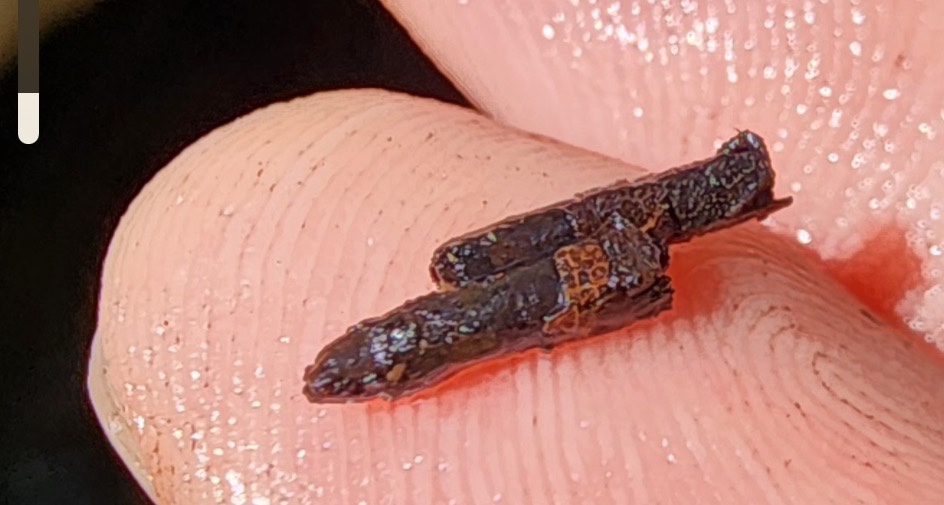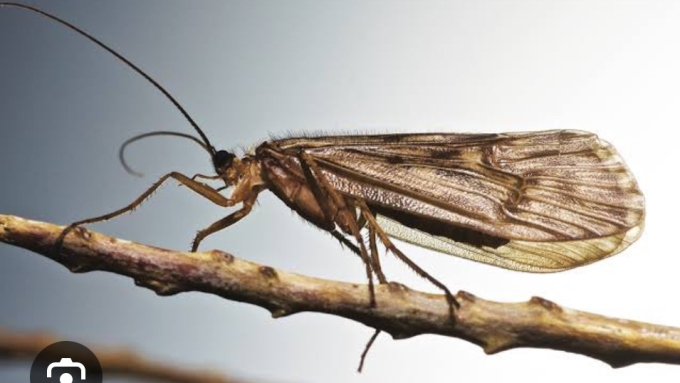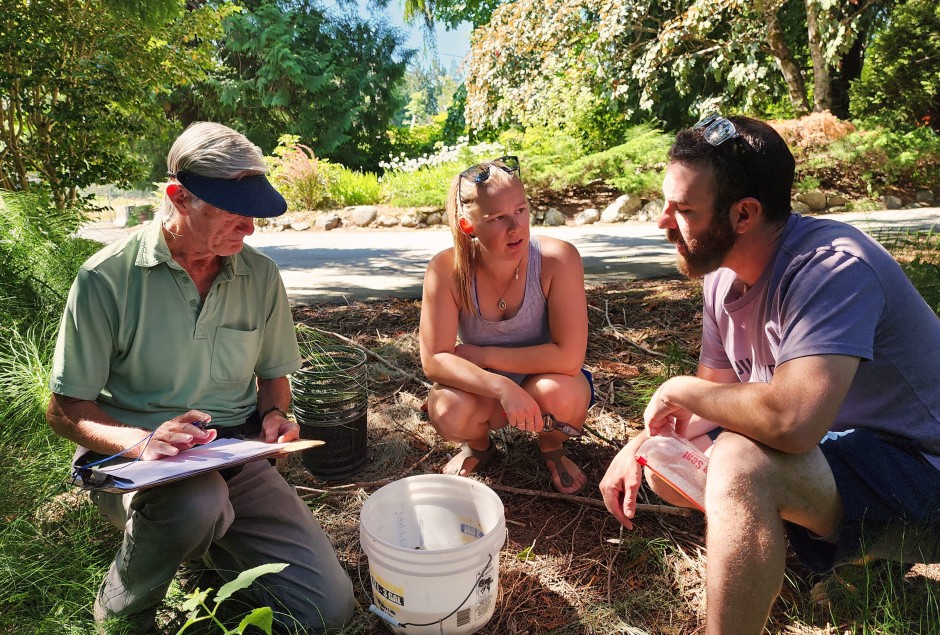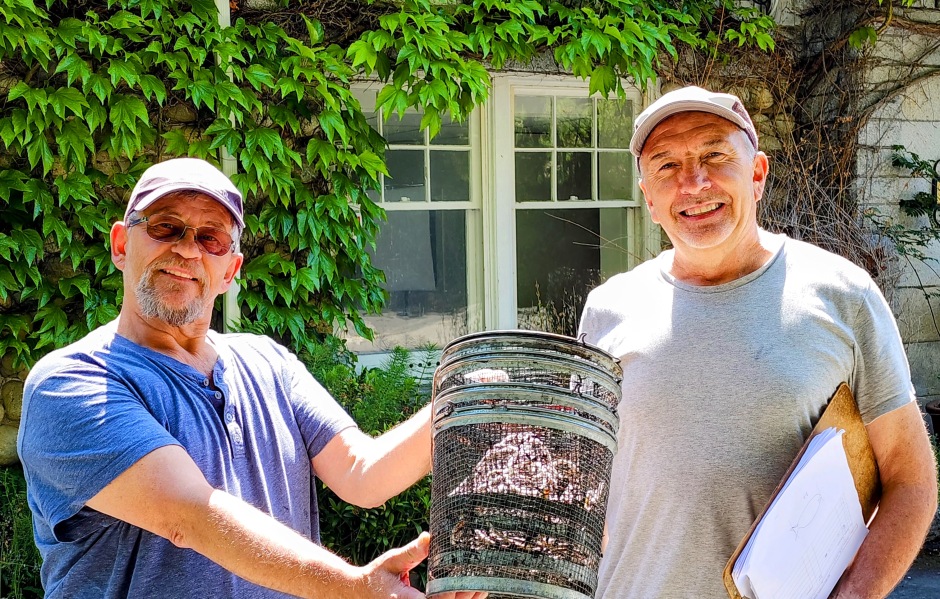A visit to Lyall Creek, Saturna Island Lyall Creek, a four kilometer long sanctuary for salmon (Coho and Chum) and trout (Searun Cutthroat) on Saturna Island, bears some similarities to Bee Creek, and a visit… More
August 29, 2023
Summers end brought welcome visitors from England to explore Bee Creek and Royal Roads University. Hilary and Robert along with thier family had a chance to see some of the sites currrently monitored plus a demonstration of the mechanics of a gee trap. A picnic overlooking the Esquimalt Lagoon at the mouth of Bee Creek was a peak moment for our visit.
Daryl and Rod completed the creek monitoring this month and much like July, the count was low leading to speculation that the trout are using the increased vegetation for shelter making it more difficult to lure them into the gee traps.
Despite the drought in BC this summer, leading to record forest fires and several heat waves, the creek remained healthy with cool waters and normal water levels. Trout fork lengths ranged from 50 to 120 millimeters again normal for the creek during the summer.
July 30th, 2023
July was an interesting month, with slightly warmer waters and continued heavy vegetation growth.
As for trout numbers recorded, numbers dropped to ten with four sites showing no trout after a day of trap soaking. Creek temperature rose to nearly 14 degrees and site 7 continued to attract the majority of cutthroat. Trout recorded appeared to be feeding very well, so it seems that most of the population of trout have moved to more sheltered areas.
We were joined by Rachel and Riley who were visiting from out east and we had a great time showing them how the creek is being monitored. Riley is a fly fisherman and we talked about how he ties flies to match the hatch of the season in Alberta. He was particularly interested in the caddisflies which were abundant. Looking closely at the tip of the casing revealed the head and front legs of the fly.

A caddisfly casing is made up of bits of vegetation and wood.
June 30, 2023
June brought continued healthy cutthroat populations, accompanied with heavy vegetation surrounding the creek.
Much like last year, parts of the creek for which are heavily overgrown provide shelter and make numbers of trout a little unpredictable. Although 25 trout were recorded, some sites, such as 7 in Royal Roads University property held only one trout after a day of soaking traps. The same occurred on site 5, suggesting that on these sites the trout have moved to cooler water and where more protection from plant life were available.
One strategy we have contemplated is to test new sites throughout the creek during the month, looking at pools upstream of current sites.
Variability of trout recorded could also be connected to the abundance or not of food. Freshwater shrimp and caddisflies are plentiful in the gee traps when emptied in collection buckets, especially at site 6, a relatively deep pool, where seven trout were recorded.
May 28th, 2023 – Season Opener
Rod (left) and James, joined up to help the season opening of the Bee Creek monitoring season.
Wet, cold spring weather in Victoria delayed plant growth until hot dry sun brought on fast spurts of plant life and within a few weeks Bee Creek became quickly overgrown.
The shade provided by new plant life provided protection for the new juvenile trout and and the same time, supported an abundance of food for the Cutthroat, such as fresh water shrimp, caterpillars, spiders, and plenty of caddisflies.


As for the trout, all but one site on the creek, held a good number of healthy Cutthroat.

In addition to ample food for the trout, predators such as the blue heron were seen at the mouth of the creek and further upstream taking the occasional trout. Overall, the creek looks healthy and nature has provided the trout with ample protection and food this spring.
October 30th, 2022
Season end on Bee Creek experienced heavy rains which soaked the area and filled the creek overnight. Despite faster running water and higher levels than usual, we recorded 30 cutthroat in seven sites, with lengths ranging from a small 50 millimetres to several at a relatively large length of 160 millimetres.
The healthy numbers finish off a monitoring season which reflects a good population of trout despite the heat wave during the summer, very late spring and an unusually early winter with heavy rains and even snow with the rapidly dropping temperatures.
With changeable weather came patterns of length. Given that a trout will grow roughly 25 millimetres in length per month lengths recorded suggest that since it take up to six weeks from spawning to hatching, the trout in Bee Creek could be up to two or three years old. Sea Run Cutthroat typically return to the coastal waters after this period of time so it is interesting to confirm this trait of largest trout recorded being 180 millimetres. (probably three years old).
September 29th, 2022
Fall has finally arrived to Vancouver Island and the cooler temperature brings more colourful trees surrounding Bee Creek.
With the season end coming up next month, we were able to retrieve 31 healthy cutthroat with the two largest being recorded near the mouth and from site 7 on Royal Roads property. The largest measured 150 millimetres, or approximately six months old.

The vegetation surrounding the creek has grown substantially over the summer, especially close to the mouth, making the placement of the traps a little challenging, but also rewarding, since dense weeds are an excellent source of cover for the fish.
Rod joined me this month and recorded the data in his customary efficient way. It looks like we may have to provide a salary raise.
Other noteworthy news is that the trout looked healthy with large bellies indicating that the creek is still providing a good source of food for the trout.
September visitors to Bee Creek.
On September 13th we were happy to receive a visit from Ashley Richter and Lindsey McCrank of CRD. We met at the mouth of the Bee Creek and spent a wonderful hour or so telling our story.
Lindsey is the coordinator of the Harbours and Watershed group which leads the Esquimalt Lagoon Stewardship Initiative. All volunteers of the Bee Creek trout monitoring team are ELSI volunteers.
Ashley is CRD’s media expert and came loaded with cameras, microphones, lights and long list of questions.
The Stewardship Storytelling project led by Lindsey, discovers motivations and experiences of volunteers. Material, videos and images will be added to CRD’s website.

We started with a demonstration of how the trout are recovered, measured and photographed, using two traps that had been set the previous day. We recovered several healthy trout from the sites nearest Pendray house, where photos were taken.
Moving to the lawn overlooking the Esquimalt Lagoon we chatted about our experiences being mindful to remember Beth Mitchell who pioneered work on the creek since 2004. It was Beth who trained our team back in 2017 and the results of efforts remain strong today.
Daryl and I chatted about the challenges and rewards of monitoring the creek, its connection to the lagoon and playing a small part in environmental protection.
August 28th, 2022
The end of summer arrived with a healthy cutthroat count on Bee Creek. However the trout population appears to be concentrated towards the mouth of the creek and smaller counts in the upper reaches closer to the source.
We can also report one dead trout only the second in over five years from site four which is located mid way in the creek. It measured 50 millimetres and cause of death is unknown.

The same site found the largest trout at 180 millimetres, all of them being active and healthy.
With two months left in the monitoring season, the creek flow is still strong and clear.
July 30th, 2022
The end of July marks the halfway point in the season for trout monitoring. The creek has slowed a little plus warmed up about 3 degrees with the warmer weather. In addition, plant life which provides shade and protection for the trout has grown thick and heavy.
This month we recovered 21 cutthroat similar to the month of June and with typical length range of 60 to 140 millimetres. The creek is running a little more slowly now and site one, as usual sees the largest and most number of trout. Their colours were bright and the juveniles were active and certainly well fed likely with freshwater shrimp.
Trout were found in all sites this month along with several Prickly Sculpins (Cottus Asper) which spawn in stream estuaries. This fish can be mottled dark brown, green or grey with white or yellow undersides. There is usually a dark spot on the back edge of the dorsal fin and the fins are edged with black. (centralcoastbioversity.org, 2022)
June 26, 2022
With only one month into the new season, the sudden warmth has made quite a few changes.
First is the rapid growth of all vegetation surrounding the creek and more importantly in the creek has provided the trout with shelter and cooler temperatures.
Sites for gee traps, along the creek and normally in open running water showed no trout. Sites with heavy vegetation growth , normally with few trout, in all cases showed significant numbers of trout. So the trout have moved quickly to sheltered, shaded and cooler spots.
The warmth has also brought a rapid increase in the amount of food for the trout to eat, namely, mosquitos, Caddis flies and fresh water shrimp. The Caddis flies have adopted new casings and when caught in the traps and examined, they emerge quickly. Shrimp are found in abundance in site six and seven, leading to the conclusion that the trout move quickly to where the food source can be found.


Trout measured from a small three month old 60 mm juvenile to a relatively huge 190 mm trout which was likely almost eight months old. In this case, the trout was the result of any early spawning in November 2021.
We continue to monitor the creek around the new bridge where new pools have been created following rehabilitation of the creek bed and vegetation.














